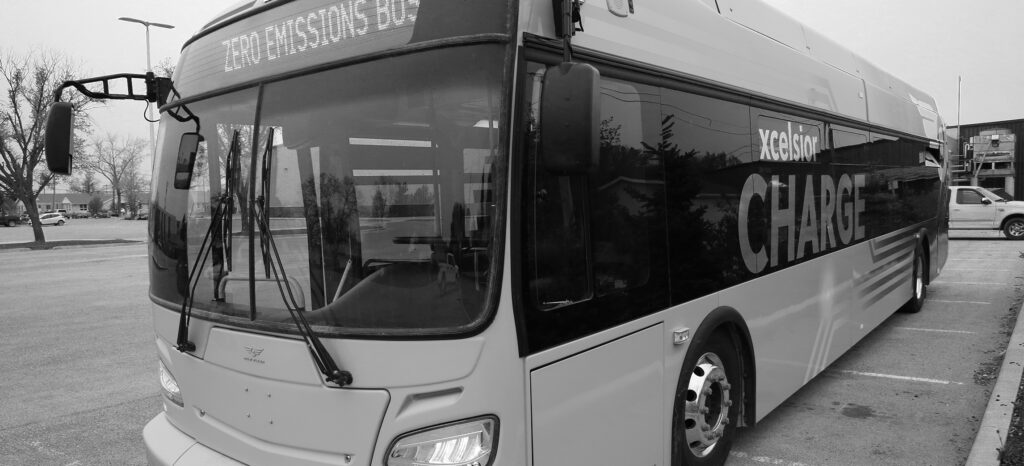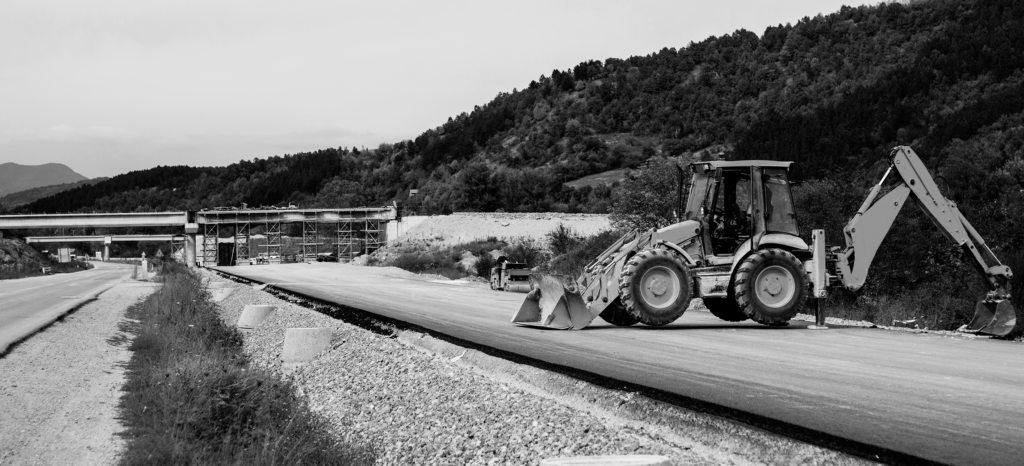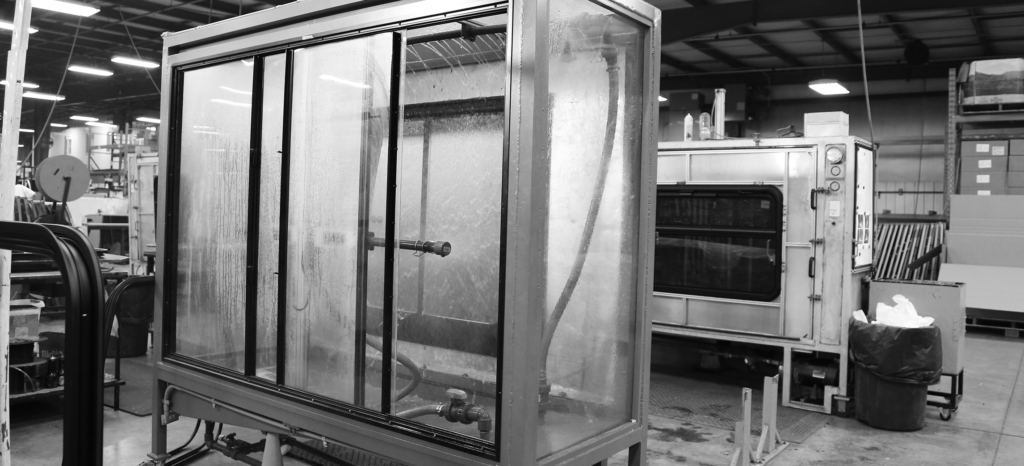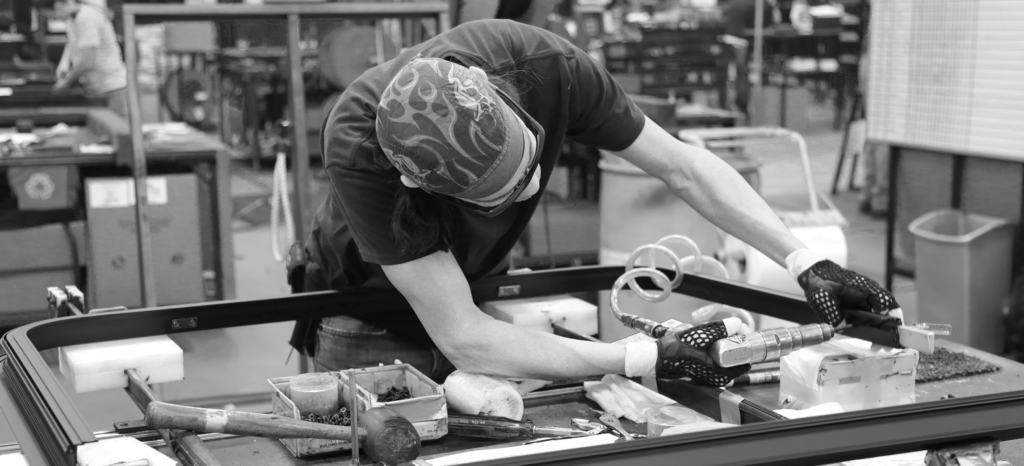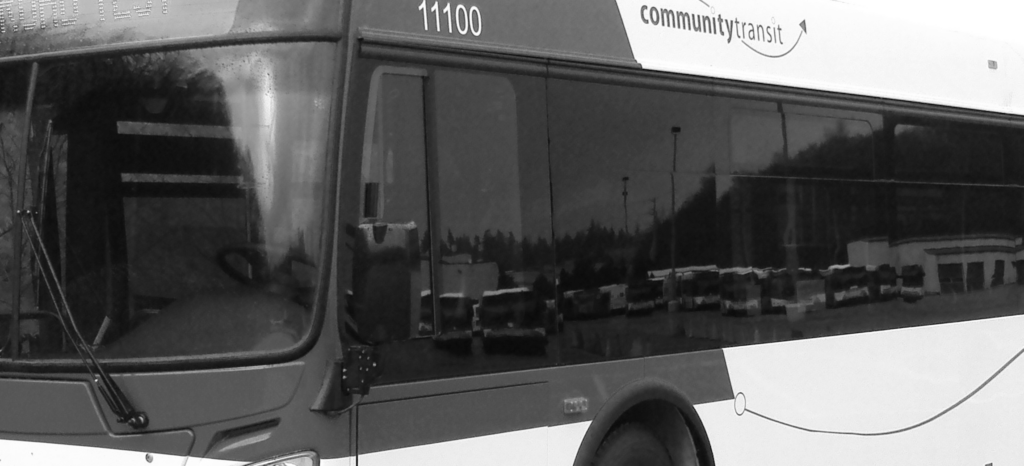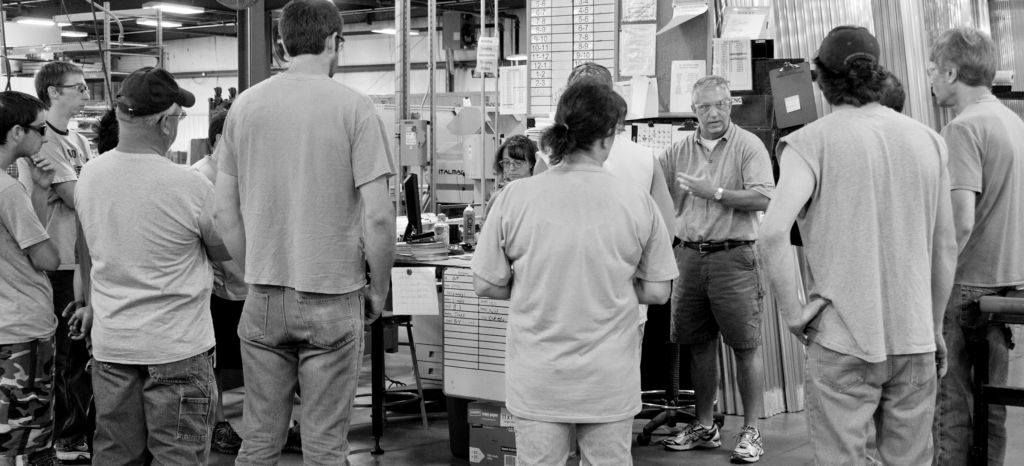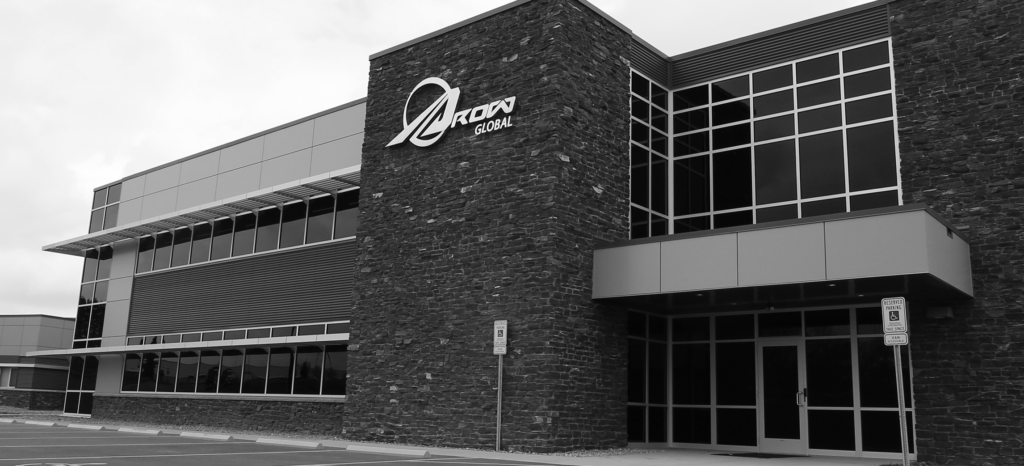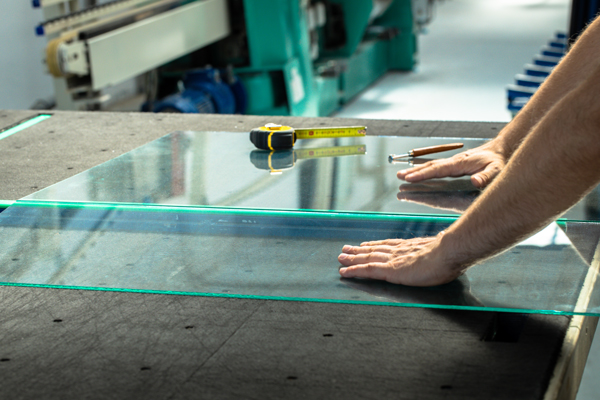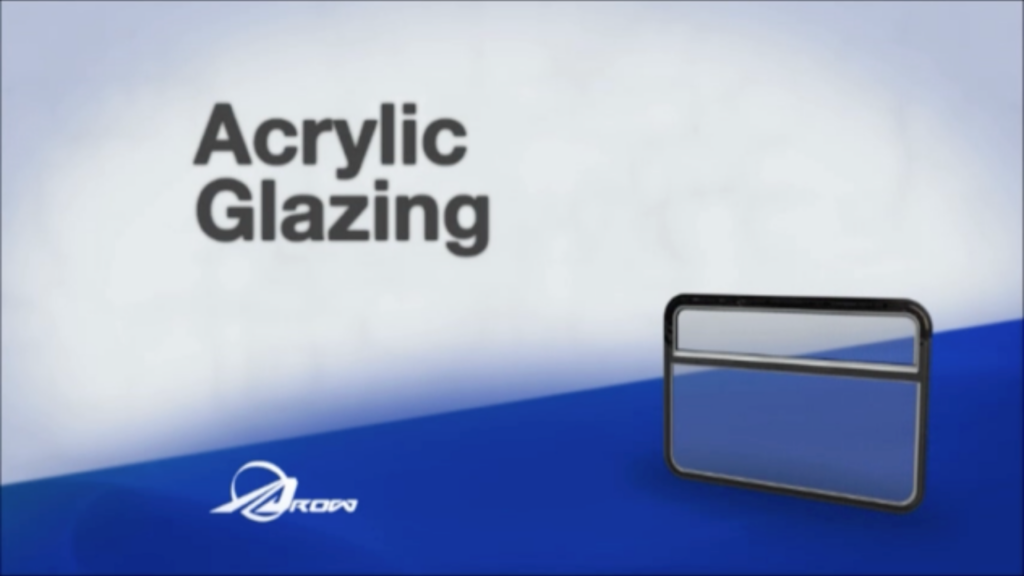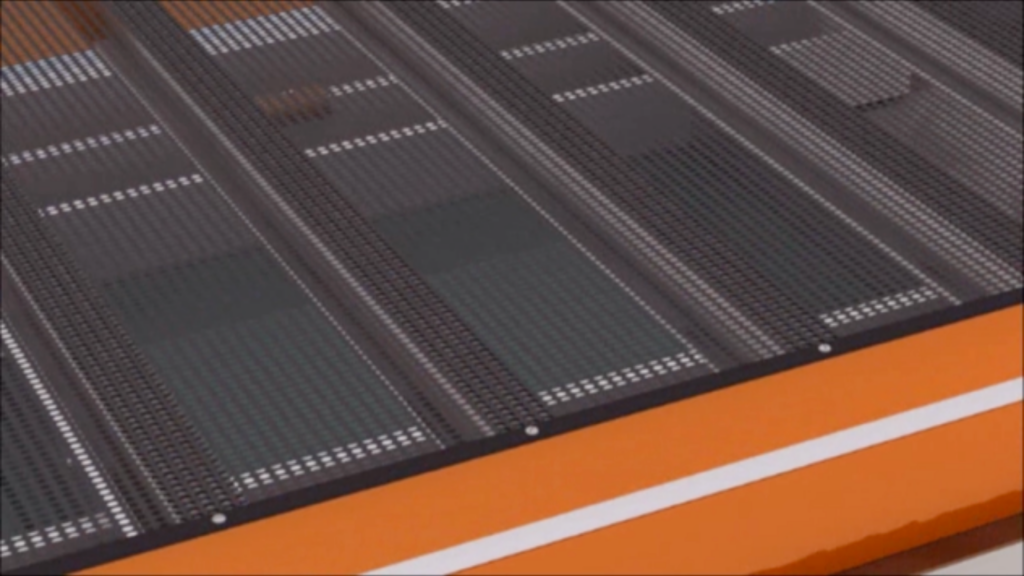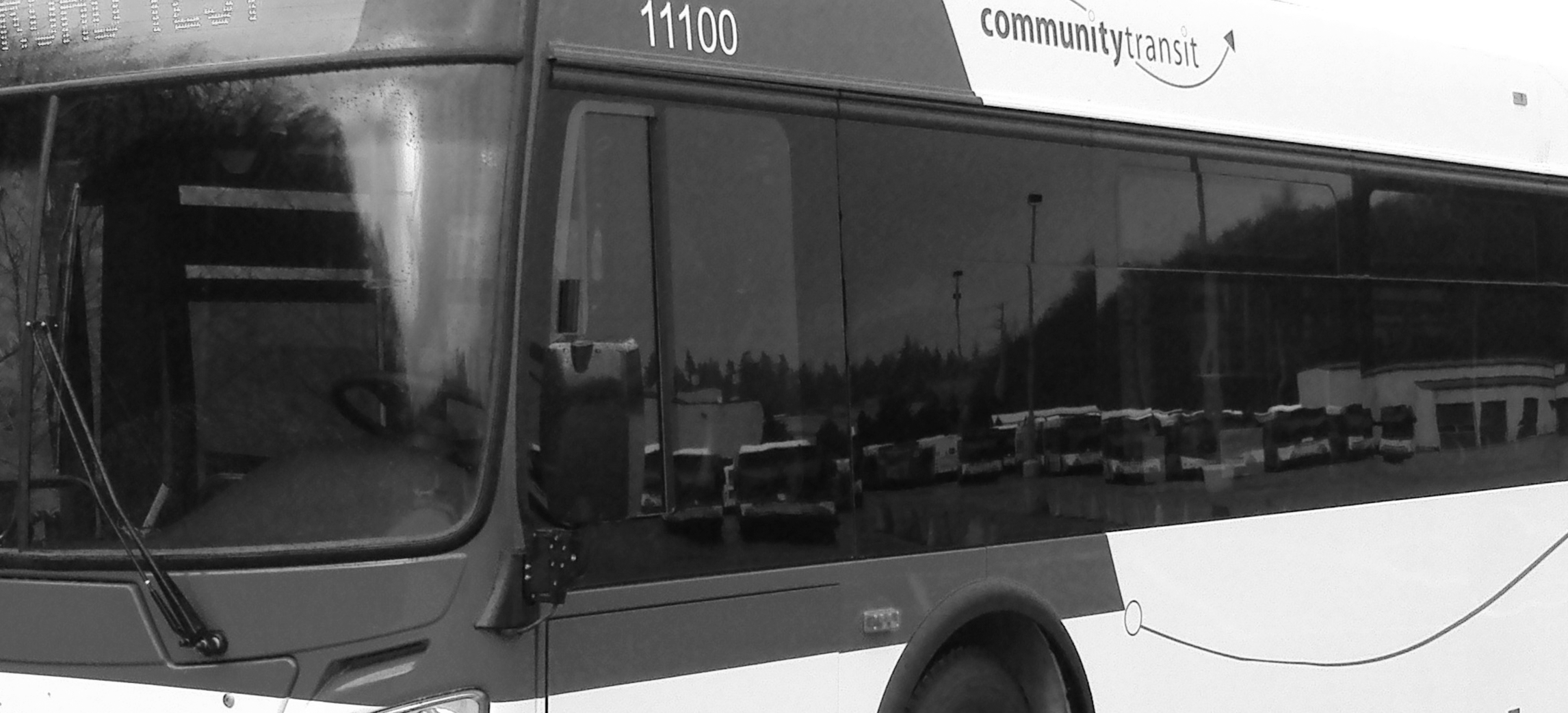
Window Glazing Options
The selection of passenger windows in a vehicle is a critical decision point that can have a significant impact on vehicle aesthetics, passenger comfort, ridership, operating costs, and safety.
Several factors should be considered when making a selection.
Material Type
Material type refers to the glazing material used in windows. AROW Global offers four different materials: laminated glass, tempered glass, acrylic, and polycarbonate.
Laminated Glass
Laminated safety glass is produced by permanently bonding together two custom-cut pieces of annealed glass with a layer of polyvinyl butyral, or PVB in an autoclave under heat and pressure. When broken, the adherence of the glass to the PVB prevents the broken glass pieces from falling out of the window opening and exposing passengers and technicians to sharp edges.
Additional Characteristics
- Edges are typically hidden (gasket, sealant or framing material ) to minimize exposure of the glass/PVB interface to the elements
- Laminated glass breaks quite easily relative to other glazing options
- Laminated glass can be curved in multiple dimensions
Tempered Glass
Tempered glass used in motor vehicle has the annealed glass cut-to-size, and subsequently placed in a tempering furnace where it is heated to a temperature high enough to permit a reconfiguration of the crystal structure on a molecular level.
Upon fracture, fully tempered glass “shatters” into granular pieces which are less prone to causing lacerations when handled.
Additional Characteristics
- Edges can be rounded and polished to create an attractive aesthetic
- The edges of tempered glass are substantially more susceptible to fracture than the surface
- Glass cannot be cut or formed after tempering (will result in shatter)
- Tempered glass can be curved in multiple dimensions with specialized tooling and in a single dimension without specialized tooling
Acrylic
Acrylic or Polymethyl methacrylate (PMMA) is a thermoplastic polymer that is known commonly by various brand names like Plexiglass, Almacoat and Lucite. Acrylic is less brittle than glass, but more brittle than polycarbonate and breaks in a pattern similar to that of annealed glass.
Polycarbonate
Polycarbonate is a thermoplastic polymer that is easily molded and thermoformed and known commonly by various manufacturer brand names like Lexan, Makrolon and Tuffak. Polycarbonate has an impact resistance 250 times greater than glass and a density of approximately 50% less.
Additional Characteristics
- Edges can be rounded and polished to create an attractive aesthetic
- Polycarbonate can be curved in multiple dimensions
Material Thickness
Nominal Thickness: 3/16″ (5mm) and 1/4″ (6mm) are typical, although up to 1/2″ (12mm) may be considered for applications where high strength/impact resistance is required and increased weight is not a problem.
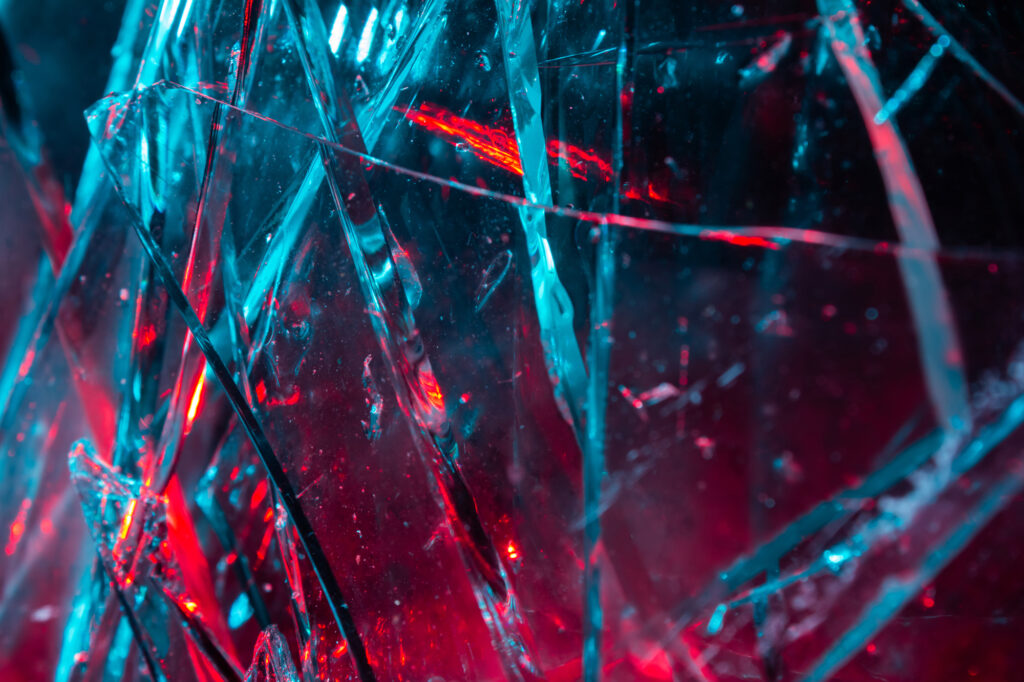
Ultraviolet (UV) Transmittance
Although UV radiation is invisible to the human eye, overexposure can cause sunburn and some forms of skin cancer. As such, it is desirable to minimize UV transmittance through windows. In very basic terms, for tempered glass, UV energy transmittance decreases as the % light transmittance decreases. There are certain colors that exhibit lower UV energy transmittance relative to % light transmittance.

Laminated glazing systems eliminate virtually all UV light, (typical % UV transmittance is cited as <1%). Additional options to reduced UV transmittance for tempered glass include options similar to those for reducing solar energy transmittance and include: glass with enhanced properties via manufacture or applied coating, as well as solar control window films.
Solar Energy Transmittance
Solar Energy Transmittance is defined as the percentage of solar energy permitted to pass through the glazing and has a significant effect on all of these modes of heat transfer. Therefore, as the total solar energy transmittance decreases, the net heat transfer decreases.
In very basic terms, solar energy transmittance decreases as the % light transmittance decreases. There are certain colors that exhibit lower solar energy transmittance relative to % light transmittance.
It is often desirable to select a glazing configuration that displays high light transmittance but does not exhibit the corresponding high level of solar energy transmittance. For this reason, there are various options available to improve the solar performance of the glazing system (often referred to as SMG, or “Solar Management Glazing”), such as exotic PVB options in laminated glass, glass with enhanced properties via manufacture or applied coating, as well as solar control window films, all of which reduce the solar energy transmittance while maintaining high light transmittance.
Modes of Heat transfer
- Conduction is the direct transfer of heat through the window to the outdoors.
- Radiation is the movement of heat as infrared energy throughout the glass.
- Air Leakage is the passage of heated air through cracks and around weather stripping.
- Convection occurs when air gives up its heat to the cooler glass and sinks towards the floor. This movement sucks new, warmer air through the glass that is in turn cooled, creating a draft.
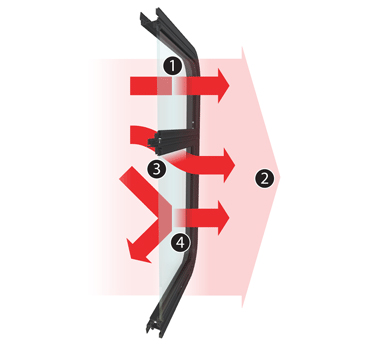
Color
Common colors include un-tinted (ie. clear), various shades of gray, green, and azuria (bluish-green); colors for laminated glass can be customized in accordance with PVB offerings, however costs increase substantially for non-typical color selections.
Light transmittance (%LT) selection is typically made with consideration to the following:
- Fleet make up – Fleet operators often make a selection that matches their existing vehicle fleet
- Desired aesthetics – It is often purported that darker tints convey an improved aesthetic, especially when used with the flush glass style of window
- Desired solar performance – Azuria colored glass displays the best solar performance (ie. higher light transmittance with relatively lower solar energy transmittance due to the combination of green and blue tints and the corresponding effect on the path of the light during transmission) than the other colors; otherwise lower solar energy transmittance necessitates correspondingly lower light transmittance.
- Different glass OEMs – Other OEMs (Guardian, PPG, and Pilkington are prevalent in North America) have products that are nominally the same (color and %LT) however a side-by-side comparison may reveal subtle color differences; it is for this reason that it is good practice to avoid comingling glass from different OEMs on the same vehicle.
Color | Laminated Glass | Tempered Glass | Acrylic | Polycarbonate |
Clear | Common | Common | Common | Common |
Grey | Common | Common | Common | Common |
Green | Common | Common | Special Order | Special Order |
Azuria (Blue/Green) | Special Order | Common | Special Order | Special Order |
Light/Luminous Transmittance
Light Transmittance or Luminous transmittance is defined as the percentage of visible light permitted to pass through the glazing and often referred to as %LT. As %LT increases, more light passes through the glass, thus leading to a less encumbered view through the glass. The %LT tops out at approximately 89% for (nominally) clear glass and commonly be as low as 9% for 6mm tempered glass.
Light transmittance (%LT) selection is typically made with consideration to the following:
- ANSI Standards mandate that glazing systems required for driving visibility have a %LT of equal to or greater than 70%
- There is no prescribed minimum %LT for side windows, however the most common configurations are gray 44% LT (tempered or laminated glass) and gray 28% LT (laminated glass)
- Glass manufacturers and laminators cite a tolerance of +/- 1-2% for the glass %LT; while a 5% difference is perceptible in controlled conditions, it is not typically detectable by the naked eye in practice
- Desired solar performance – Darker tints (typically) allow less solar energy to pass through; exotic configurations using high-performance PVB in laminated glass may permit enhanced solar performance (i.e. less solar energy transmittance) while maintaining high light transmittance
- Higher light transmittance permits better visibility into the vehicle from the outside; this is often desirable especially in the event of an emergency and higher security situations
Color / %LT Representation

Gray

Azuria (bluish-green)

Green
Safety Glazing Standards
All glazing must be labeled according to the requirements imposed by the U.S. Department of Transportation (DOT). The DOT label identifies the glazing manufacturer and the standard to which the glazing was manufactured.
Glazing materials covered under this standard include (but are not limited to) laminated glass, tempered glass, and safety glazing plastics (including sacrificial protection shields). This standard also covers new as well as replacement glazing and sacrificial protection shields. A manufacturer or distributor, who cuts a section of glazing material to which this standard applies, must mark that material in accordance with Section 7 of ANSI/ SAE Z26.1-1996. Each section cut from the original piece of glazing marked by the manufacturer shall be marked using the same words, designation, characters, and numerals as the piece from which it was cut. CFR data is current as of June 30, 2011.
Table 1: Acceptable Applications of DOT Glazing Standards
Applications | Glazing Standard | ||||||
AS-1 | AS-2 | AS-3 | AS-4 | AS-5 | AS-14 | AS-15B | |
May be used anywhere in the vehicle | x | ||||||
May be used anywhere in the vehicle, except windshields | x | ||||||
May be used anywhere in the vehicle, except windshields and certain specified locations (those required for operator driving visibility) | x |
| |||||
May be used anywhere in the vehicle, except windshields and certain specified locations (those required for operator driving visibility) | x | x |
| ||||
May be used anywhere in the motor vehicle | x | ||||||
May be used anywhere in the motor vehicle except windshields | x | ||||||
Table 2: Glazing Type
Glazing Type | Glazing Standard | ||||||
AS-1 | AS-2 | AS-3 | AS-4 | AS-5 | AS-14 | AS-15B | |
Laminated Glass | x | ||||||
Laminated or Tempered Glass | x | x | |||||
Rigid Plastics | x | x | |||||
Glass Plastics (interior film lamination) | x | ||||||
Tempered Glass-Plastics (interior film lamination) | x | ||||||
Table 3: Permissible Light Transmittance
Glazing Type | Glazing Standard | ||||||
AS-1 | AS-2 | AS-3 | AS-4 | AS-5 | AS-14 | AS-15B | |
Greater than or equal to 70% | x | x | x | x | x | ||
No restriction | x | x | |||||
For more information on glazing standards visit the Technical Bulletin section of our Resources Page. You can also learn about different glazing options on our Glazing Options page.
Material impact resistance is measured by the ability of the material to withstand abrasion over time and is typically governed by the ANSI/SAE Z26.1 tests 5.17 Abrasion Resistance, Test 17 (Plastics) and 5.18 Abrasion, Test 18 (Safety Glazing Material).
With an increasing shift toward electric vehicles and upward pressure on energy markets and fuel costs, there is significant interest in managing vehicle weight. As such, consideration is often given to the weight density of each glazing option.
